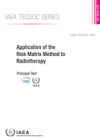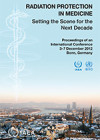More than 95 per cent of the radiation dose the global population is exposed to from man-made sources, stems from medical exposures. The IAEA works on preventing patients to be exposed to unnecessary and unintended radiation, while ensuring that radiation doses to patients are commensurate with the medical purpose.
Patients
Radiation protection of patients is an essential element of good medical practice. It has been estimated that the number of medical procedures using ionizing radiation grew from about 1.7 billion in 1980 to 4 billion in 2007. The goal in medical exposure is not to give the lowest dose, but to deliver a dose to the patient that is commensurate with the intended medical purpose. For example, a radiological medical practitioner must give the correct dose to a patient to diagnose or cure a tumour. Delivering a dose that is too low or too high may be problematic.
There is no doubt that the application of ionizing radiation and radioactive substances in diagnostic, interventional and therapeutic applications in medicine is beneficial to hundreds of millions of people each year. However, using radiation in medicine must carefully balance the benefits of enhancing human health and welfare against the inherent risks of exposing people to radiation.
The IAEA aims to help reduce unnecessary and unintended exposures in practice through a dedicated radiation protection programme and activities. Such unnecessary exposures can be a result of procedures that are not justified for a specified objective; from the application of medical radiation procedures to individuals whose condition does not warrant such interventions; and from medical exposures that are not appropriately optimized for the situation in which they are being used. As for unintended exposures, these can be a consequence of an unsafe design or inappropriate use of medical radiation technology.








